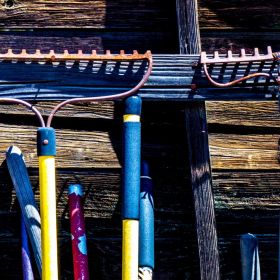
Planting the Plains
Airs Thursdays at 10:30 am CT and Saturdays at 8:35 am CT
Every week, Anthony Reardon presents Planting the Plains, a weekly feature designed to provide the High Plains with timely, yet timeless, research-based, reliable, horticultural information that can assist in bettering everyday lives by easing the burden of troublesome landscape issues.
Each episode will bring a new horticultural, entomological, or wildlife topic to the forefront, furthering practical knowledge on how that topic pertains to the average person, and how that person may need to address such a topic in their own backyard.
To reach Anthony with questions or comments, please send him an email!
Latest Episodes
-
Getting a feel for microclimates can really open up your options in some ways...it might lead you to plant one or more crops earlier than others, or to help determine where in your garden to place certain items that require more or less hydration if your plot is uneven. Learn more in this week's episode, and see if it might have applications in your own garden!
-
Landscaping can really add to the appearance of your home. But here on the High Plains, it can also pay to be practical to factor in the risk of wildfires when designing your yard.
-
Do you immediately remove any weed you see in your garden? And do you actually stay out of your garden during the winter? These actually aren't even the biggest questions facing you when it comes to addressing winter weeds.
-
-
Wildlife in your garden in the winter might not sound so bad, but most of it won't be invited. So what to do?
-
Just because it's cold out doesn't mean you can't be thinking about your garden...or someone else's garden. Help the gardeners in your life with thoughtful gardening gift ideas!
-
At the end of the season, it can be tempting to clean up your entire garden of all detritus from old plants, but leaving the seed pods, plant stems and other materials can have some benefits, and this week, we'll talk about how to make dormancy work for you!
-
You use them all year long to help tend your garden, so why wouldn't you take care of them, and make sure that they can take care of you? I'm talking about your lawn tools, of course, and this week, we'll talk about how you can clean and store yours for the winter!
-
Most of us like to give our plants a treat during the warmer weather, and so we'll bring them outside to soak up some extra sun. But of course, the weather will cool again at some point, and the process of moving a plant indoors and outdoors should be done with some consideration of how the conditions will be changing. We'll talk about a few things to think about in this week's episode!
-
At the end of the season, it's never a bad idea to spend some time reviewing what worked for you and what didn't, and actually making some notes on which varieties overproduced or disappointed you. You won't necessarily remember in future years, and over time, this practice will give you a fair bit of data points on which to help base your future research. We'll talk more about how to keep track of this information in this week's episode!











